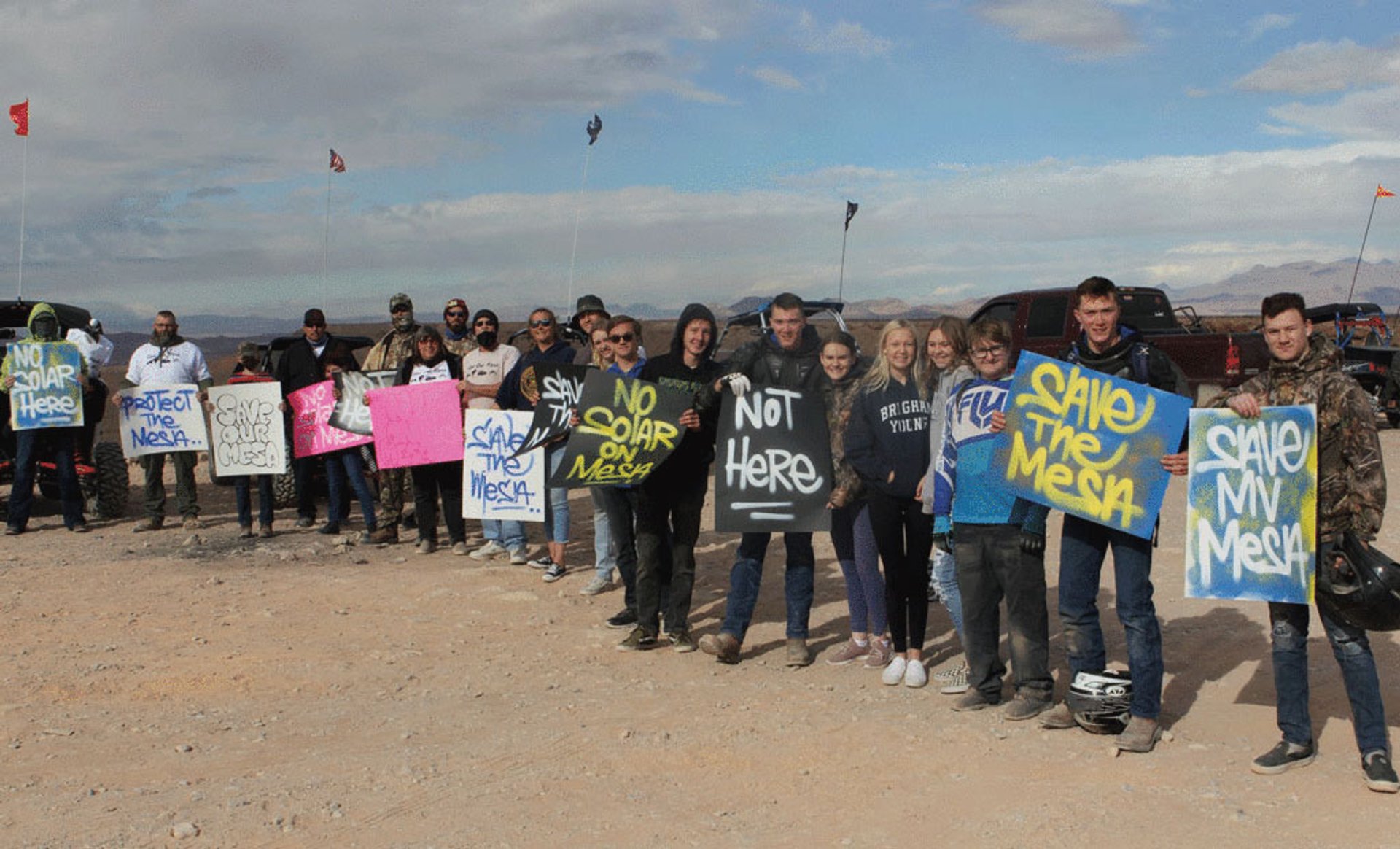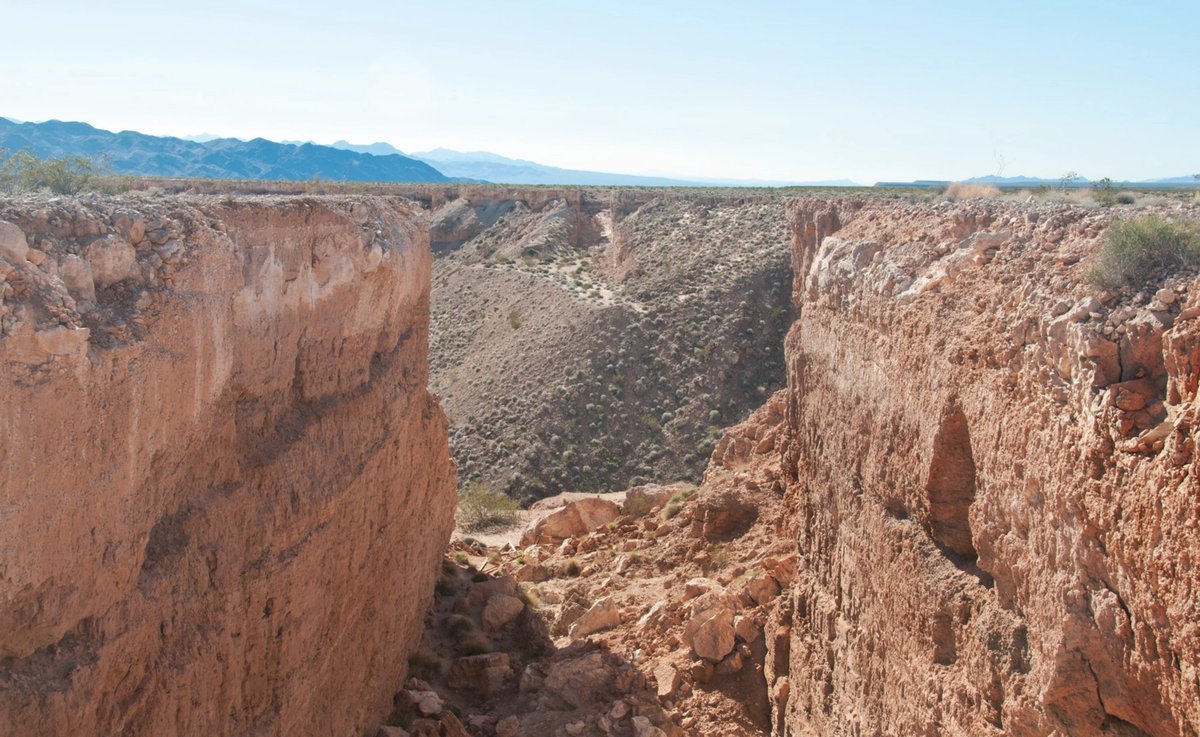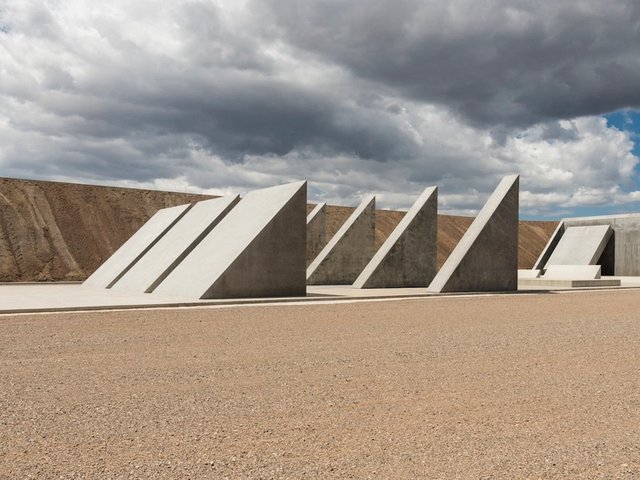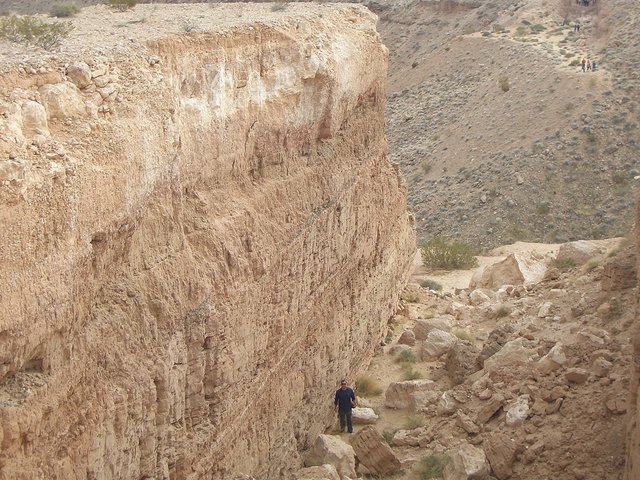A planned solar power plant on the Mormon Mesa near Overton, Nevada could affect the viewing of Michael Heizer’s monumental Double Negative (1969)—a land art installation of two 50 ft-deep trenches dug across a natural canyon on the eastern end of the remote desert site.
The Battle Born Solar Project under development by the California-based renewable energy company Arevia Power is estimated to cost $1bn and cover around 9,000 acres of the Mormon Mesa, which spans around 150,000 acres.
The flat-topped ridge of land is largely owned by the federal government and overseen by the Bureau of Land Management, so the plan still must pass an environmental screening process before it is approved. But it has already received significant pushback from residents of Overton and neighbouring towns, who argue that it would encroach on the view around Double Negative and could also threaten nearby archaeological sites and endangered species, such as the desert tortoise.
“We have been told there would still be access to Double Negative, but the power of the place would be lost forever,” says Lisa Childs, who founded the grassroots initiative Save Our Mesa to protest against the development. “Thousands of visitors flock to the Mormon Mesa each year. We are not against renewable energy but we feel it needs to be placed more responsibly.”
Representatives for Arevia Power could not be reached for comment.
Gagosian Gallery, which has represented Heizer since 2013, confirms that its representatives are “aware of the project and are in communication with the project principals”, says the gallery’s senior director, Kara Vander Weg. She “hopes Nevada politicians and residents will help protect this monumental and historic example of Land Art in America”.
Representatives for the Museum of Contemporary Art in Los Angeles (Moca)—which owns the work—could not be reached for comment.

The grassroots initiative Save Our Mesa is protesting against the solar power development
Heizer has had to contend with “encroaching development for much of his career”, says William Fox, the founding director of the Centre for Art and Environment at the Nevada Museum of Art and a leading advocate for the artist’s work.
One notable example is the artist’s magnum opus, City—the colossal complex of earthworks that Heizer has been creating since the 1970s in the Nevada desert, which had been threatened for years by a proposal to build a railway line nearby that would transport nuclear waste to a repository in Yucca Mountain. The Triple Aught Foundation, a non-profit arts organisation created in 1998 to manage the site, successfully lobbied in 2015 to get federal protection for more than 800,000 acres surrounding the work.
Another work, Munich Depression (1969)—a 16ft-deep crater in a suburb of the German city—was “surrounded and then subsumed by apartment buildings shortly after its completion”, Fox says.
In the case of Double Negative, having a sprawling solar array on the mesa would cause a serious “disruption of the existing context for the art,” Fox adds. “When atop Double Negative, you can see evidence of farming and roads, but it is distant.”
To get across the rough terrain to view the work, visitors are advised to use a four-wheel-drive vehicle or motorbike, and directions are sparse, with no signage on the dirt road that leads to it. Although the solar plant is not expected to block the road, the development would likely be visible from the sculpture, and construction could last more than two years.
“You would miss the visual reset away from civilisation during the drive that scrubs your vision clean, so to speak,” Fox says. “So when you come to the art, you experience that cognitive dissonance when you see the trenches.”
Nevada’s governor, Steve Sisolak, had previously petitioned former president Donald Trump to fast track the Battle Born Solar Project, but his request was not granted before President Joseph Biden took office earlier this year. Organisations like Save Our Mesa are now requesting that state and federal officials agree to designate the Mormon Mesa as a protected recreational zone, which would prohibit development in the area.
The art of ‘nothing’
The American art dealer and philanthropist Virginia Dwan, an early patron of land art, provided the $100,000 needed to purchase the 60-acre site and construct Double Negative, which required the displacement of more than 240,000 tons of desert sandstone. She donated the work to Moca in 1984, after Heizer objected to her selling it.
In an interview with The New York Times soon after, Dwan said the museum’s interest in the work showed that “art isn’t just something portable to embellish a museum”. Rather, “Double Negative is something that calls attention to the world. It calls our attention to the West and to the earth, both as a material and as a planet”, she said.
Heizer, however, was somewhat ambivalent about the donation, believing that Double Negative should be experienced firsthand, and fearing that the piece would be misinterpreted in a museum setting. That same year, Moca held the exhibition In Context: Michael Heizer, Geometric Extraction featuring aerial photographs of the sculpture, but documentation of Double Negative has been left out of later exhibitions of the artist’s work.
In his agreement with Moca, Heizer stipulated that the museum would not actively conserve the site and that natural weathering and erosion should reclaim the land. But the vibrations from nearby construction would likely speed up that process, while looming man-made structures would render the objective of the sculpture—a void within a void—meaningless.
Heizer is one of the best-known artists from the land art movement and his practice has been informed by research into ancient megaliths and venerated stones. His earliest works include a series of “negative sculptures” that are made largely from the absence of material, such as his geometric holes embedded in the floor of Dia: Beacon, titled North, East, South, West (1967/2002). Speaking on Double Negative, Heizer once said: “There is nothing there, yet it is still a sculpture.”




